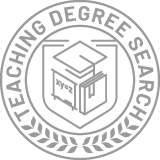Bachelor’s Degrees in Learning Sciences
Education Levels of Learning Sciences Majors
During the most recent year for which data is available, 2,098 people earned their bachelor's degree in learning sciences. This makes it the 14th most popular bachelor's degree program in the country.
The following table shows the number of diplomas awarded in learning sciences at each degree level.
| Education Level | Number of Grads |
|---|---|
| Bachelor’s Degree | 2,098 |
| Master’s Degree | 690 |
| Graduate Certificate | 51 |
| Doctor’s Degree | 24 |
Earnings of Learning Sciences Majors With Bachelor’s Degrees
At this time, we do not have the data to estimate the median earnings for this class of people.
Student Debt
The data on debt ranges for learning sciences majors who have their bachelor's degree is not available.
Student Diversity
More women than men pursue their bachelor's degree in learning sciences. About 88.1% of graduates with this degree are female.
| Gender | Number of Grads |
|---|---|
| Men | 249 |
| Women | 1,849 |

The racial-ethnic distribution of learning sciences bachelor’s degree students is as follows:
| Race/Ethnicity | Number of Grads |
|---|---|
| Asian | 28 |
| Black or African American | 127 |
| Hispanic or Latino | 233 |
| White | 1,466 |
| International Students | 5 |
| Other Races/Ethnicities | 239 |

Most Popular Learning Sciences Programs for Bachelor’s Degrees
There are 9 colleges that offer a bachelor’s degree in learning sciences. Learn more about the most popular 9 below:
Western Governors University tops the list of the most popular school in the U.S. for learning sciences majors who are seeking their bachelor's degree. Each year, around 147,800 students seeking various degrees attend the university. The average in-state tuition for full-time undergraduates is $7,710 per year, while in-state graduate students, on average, pay $8,302 per year. During the most recent year for which we have data, 1,189 people received their bachelor's degree in learning sciences from WGU. About 89% of this group were women, and 21% were students from an underrepresented racial-ethnic group.
The 2nd most popular school in the country for learning sciences majors who are seeking their bachelor's degree is University of Arizona. Each year, around 45,600 students seeking various degrees attend the university. The average in-state tuition for full-time undergraduates is $11,546 per year, while in-state graduate students, on average, pay $12,718 per year. During the most recent year for which we have data, 77 people received their bachelor's degree in learning sciences from University of Arizona. Of these students, 72% were women and 48% were members of underrepresented racial-ethnic groups.
The 3rd most popular school in the country for learning sciences majors who are seeking their bachelor's degree is The University of Arizona Global Campus. The average in-state tuition for full-time undergraduates is $12,240 per year, while in-state graduate students, on average, pay $12,645 per year. During the most recent year for which we have data, 42 people received their bachelor's degree in learning sciences from UAGC. About 100% of this group were women, and 44% were students from an underrepresented racial-ethnic group.
Northwestern University is the 4th most popular school in the nation for students seeking a bachelor's degree in learning sciences. The average in-state tuition for full-time undergraduates is $64,887 per year, while in-state graduate students, on average, pay $52,698 per year. During the most recent year for which we have data, 8 people received their bachelor's degree in learning sciences from Northwestern. About 100% of this group were women, and 50% were students from an underrepresented racial-ethnic group.
Point Park University is the 5th most popular school in the nation for students seeking a bachelor's degree in learning sciences. The average in-state tuition for full-time undergraduates is $36,240 per year, while in-state graduate students, on average, pay $14,184 per year. During the most recent year for which we have data, 5 people received their bachelor's degree in learning sciences from Point Park. Around 40% of these students were from an underrepresented racial-ethnic group, and 100% were women.
The University of Alabama is the 7th most popular school in the nation for students seeking a bachelor's degree in learning sciences. The average in-state tuition for full-time undergraduates is $11,100 per year, while in-state graduate students, on average, pay $11,100 per year. During the most recent year for which we have data, 0 people received their bachelor's degree in learning sciences from UA. About 100% of this group were women, and 50% were students from an underrepresented racial-ethnic group.
Louisiana State University and Agricultural & Mechanical College comes in at #7 on our list of the most popular colleges offering bachelor's degrees in learning sciences. The average in-state tuition for full-time undergraduates is $8,038 per year, while in-state graduate students, on average, pay $9,132 per year. During the most recent year for which we have data, 0 people received their bachelor's degree in learning sciences from Louisiana State University.
Explore Major by State
Alabama
Arkansas
Connecticut
Florida
Idaho
Iowa
Louisiana
Massachusetts
Mississippi
Nebraska
New Jersey
North Carolina
Oklahoma
Rhode Island
Tennessee
Vermont
West Virginia
Related Majors
Below are some popular majors that are similar to learning sciences that offer bachelor’s degrees.
| Major | Annual Degrees Awarded |
|---|---|
| Other Educational Assessment | 13 |
References
*The racial-ethnic minority student count is calculated by taking the total number of students and subtracting white students, international students, and students whose race/ethnicity was unknown. This number is then divided by the total number of students at the school to obtain the percentage of racial-ethnic minorities.
- College Factual
- National Center for Education Statistics
- O*NET Online
- Bureau of Labor Statistics
- Image Credit: By US Navy Mass Communication Specialist 1st Class Paul J. Phelps under License
More about our data sources and methodologies.







